Visual Culture Essay: Upcycling, Fashion Waste, and Sustainability
VerifiedAdded on 2023/06/07
|15
|1893
|109
Essay
AI Summary
This essay delves into the concept of upcycling within the fashion industry as a means of reducing waste and promoting sustainability. The introduction establishes the importance of sustainability and introduces upcycling as a key solution, connecting it to the theory of green economics. The essay aims to analyze the process of upcycling, its effectiveness in waste reduction, and its potential to foster a greener economy. Primary research, based on the visual analysis of ten images, is conducted to explore these aspects. The main body further elaborates on sustainability, green economics, and the fashion industry's environmental impact. It then uses the images to demonstrate upcycling's application and benefits, showcasing examples of upcycled garments and connecting them to the broader goal of a more sustainable fashion industry. The conclusion summarizes the findings, emphasizing upcycling's viability and its role in minimizing waste and promoting profitability in the fashion industry. The research highlights the challenges and opportunities in making the fashion sector more environmentally responsible.

Visual culture
How can we
reduce the waste
by upcycling
within the fashion
Industry?
Contents
How can we
reduce the waste
by upcycling
within the fashion
Industry?
Contents
Paraphrase This Document
Need a fresh take? Get an instant paraphrase of this document with our AI Paraphraser
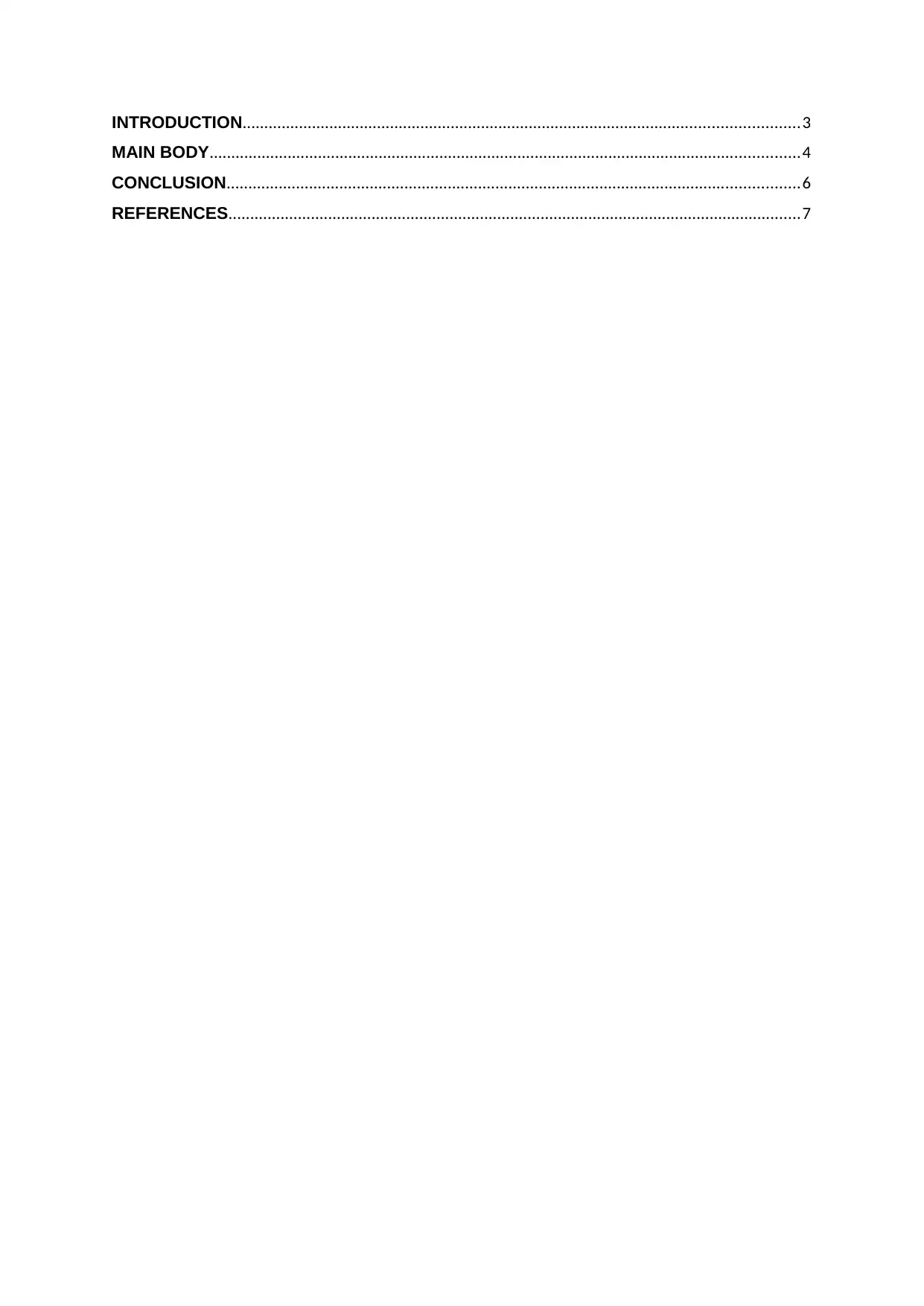
INTRODUCTION................................................................................................................................3
MAIN BODY........................................................................................................................................4
CONCLUSION....................................................................................................................................6
REFERENCES....................................................................................................................................7
MAIN BODY........................................................................................................................................4
CONCLUSION....................................................................................................................................6
REFERENCES....................................................................................................................................7
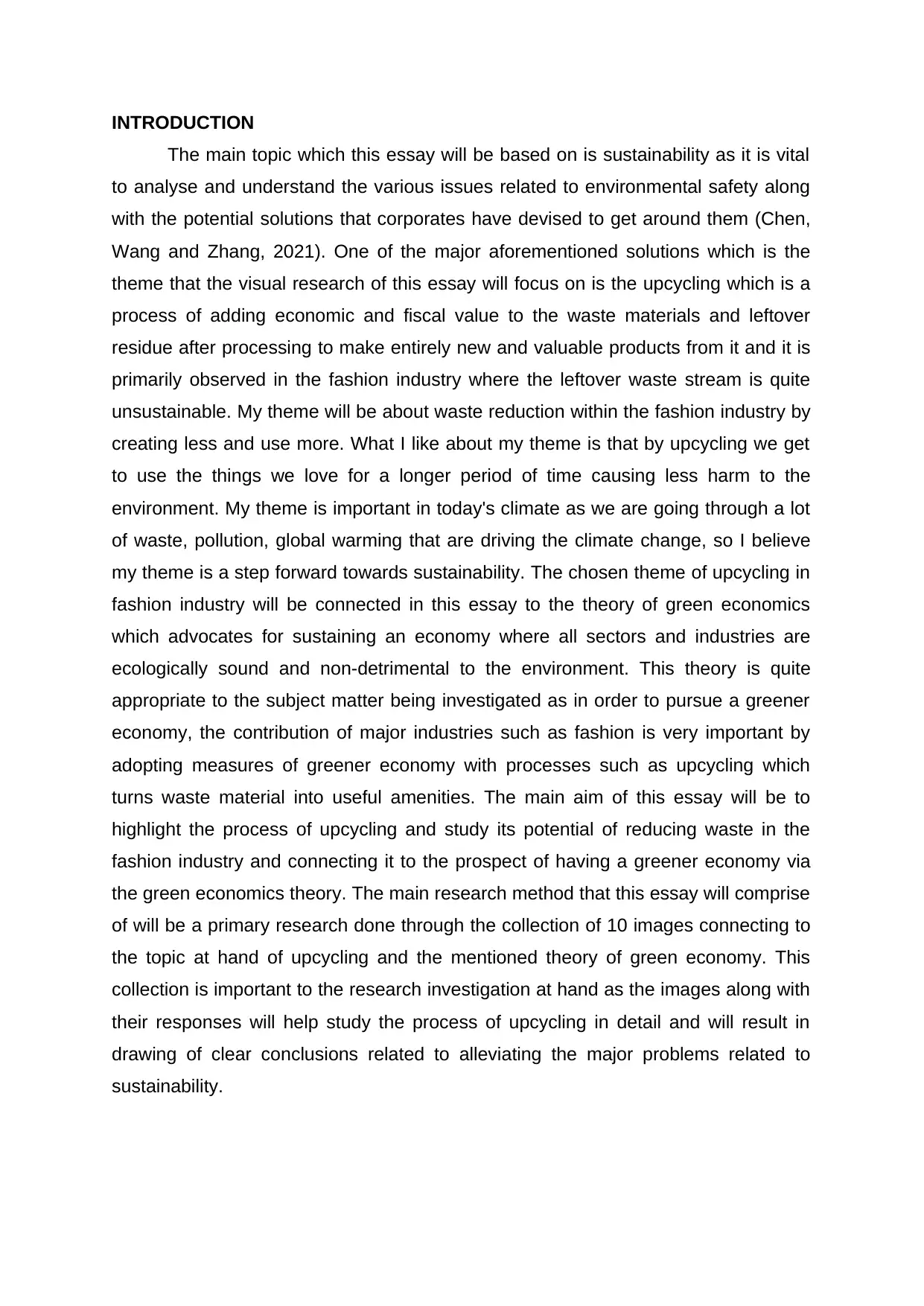
INTRODUCTION
The main topic which this essay will be based on is sustainability as it is vital
to analyse and understand the various issues related to environmental safety along
with the potential solutions that corporates have devised to get around them (Chen,
Wang and Zhang, 2021). One of the major aforementioned solutions which is the
theme that the visual research of this essay will focus on is the upcycling which is a
process of adding economic and fiscal value to the waste materials and leftover
residue after processing to make entirely new and valuable products from it and it is
primarily observed in the fashion industry where the leftover waste stream is quite
unsustainable. My theme will be about waste reduction within the fashion industry by
creating less and use more. What I like about my theme is that by upcycling we get
to use the things we love for a longer period of time causing less harm to the
environment. My theme is important in today's climate as we are going through a lot
of waste, pollution, global warming that are driving the climate change, so I believe
my theme is a step forward towards sustainability. The chosen theme of upcycling in
fashion industry will be connected in this essay to the theory of green economics
which advocates for sustaining an economy where all sectors and industries are
ecologically sound and non-detrimental to the environment. This theory is quite
appropriate to the subject matter being investigated as in order to pursue a greener
economy, the contribution of major industries such as fashion is very important by
adopting measures of greener economy with processes such as upcycling which
turns waste material into useful amenities. The main aim of this essay will be to
highlight the process of upcycling and study its potential of reducing waste in the
fashion industry and connecting it to the prospect of having a greener economy via
the green economics theory. The main research method that this essay will comprise
of will be a primary research done through the collection of 10 images connecting to
the topic at hand of upcycling and the mentioned theory of green economy. This
collection is important to the research investigation at hand as the images along with
their responses will help study the process of upcycling in detail and will result in
drawing of clear conclusions related to alleviating the major problems related to
sustainability.
The main topic which this essay will be based on is sustainability as it is vital
to analyse and understand the various issues related to environmental safety along
with the potential solutions that corporates have devised to get around them (Chen,
Wang and Zhang, 2021). One of the major aforementioned solutions which is the
theme that the visual research of this essay will focus on is the upcycling which is a
process of adding economic and fiscal value to the waste materials and leftover
residue after processing to make entirely new and valuable products from it and it is
primarily observed in the fashion industry where the leftover waste stream is quite
unsustainable. My theme will be about waste reduction within the fashion industry by
creating less and use more. What I like about my theme is that by upcycling we get
to use the things we love for a longer period of time causing less harm to the
environment. My theme is important in today's climate as we are going through a lot
of waste, pollution, global warming that are driving the climate change, so I believe
my theme is a step forward towards sustainability. The chosen theme of upcycling in
fashion industry will be connected in this essay to the theory of green economics
which advocates for sustaining an economy where all sectors and industries are
ecologically sound and non-detrimental to the environment. This theory is quite
appropriate to the subject matter being investigated as in order to pursue a greener
economy, the contribution of major industries such as fashion is very important by
adopting measures of greener economy with processes such as upcycling which
turns waste material into useful amenities. The main aim of this essay will be to
highlight the process of upcycling and study its potential of reducing waste in the
fashion industry and connecting it to the prospect of having a greener economy via
the green economics theory. The main research method that this essay will comprise
of will be a primary research done through the collection of 10 images connecting to
the topic at hand of upcycling and the mentioned theory of green economy. This
collection is important to the research investigation at hand as the images along with
their responses will help study the process of upcycling in detail and will result in
drawing of clear conclusions related to alleviating the major problems related to
sustainability.
⊘ This is a preview!⊘
Do you want full access?
Subscribe today to unlock all pages.

Trusted by 1+ million students worldwide
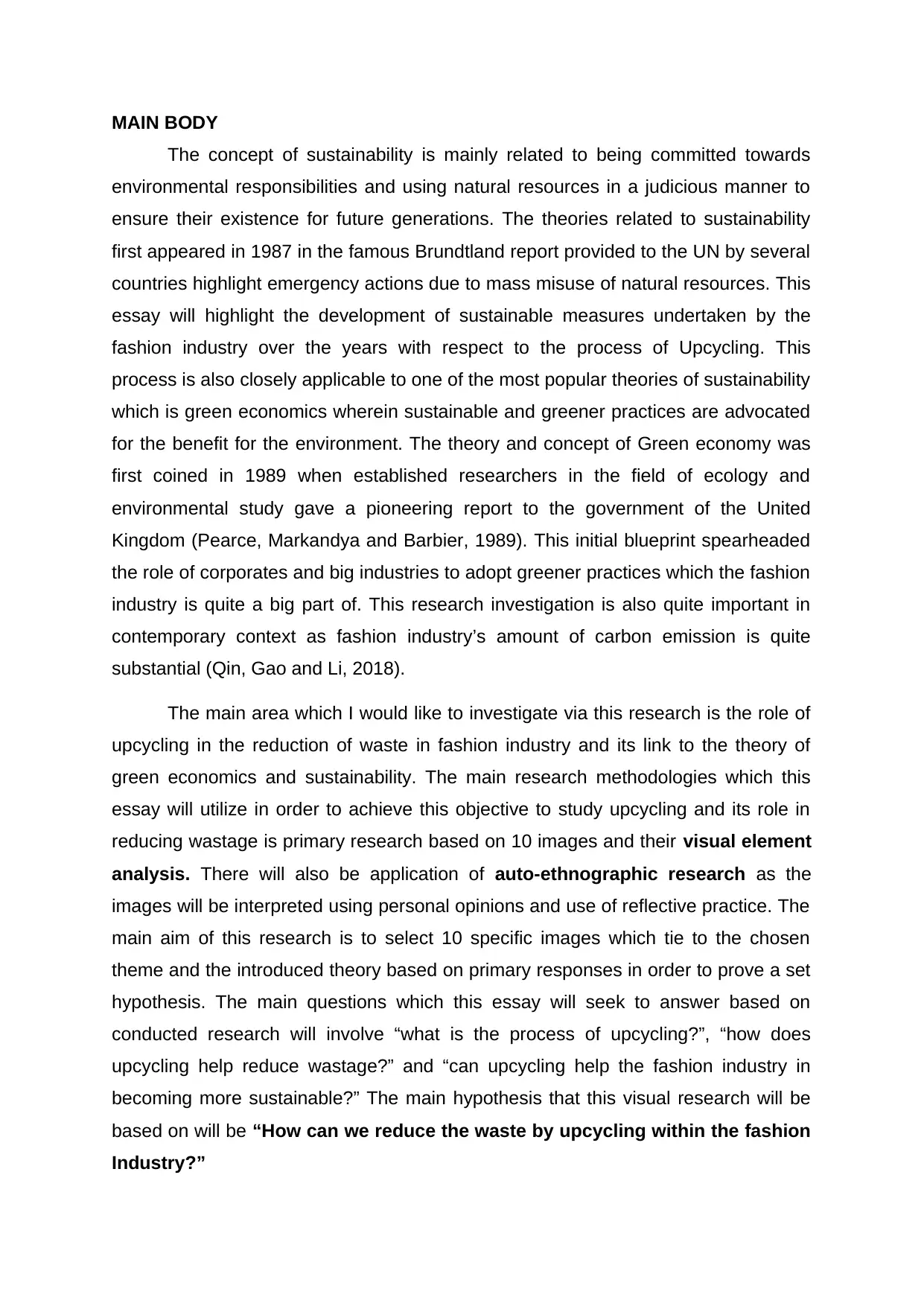
MAIN BODY
The concept of sustainability is mainly related to being committed towards
environmental responsibilities and using natural resources in a judicious manner to
ensure their existence for future generations. The theories related to sustainability
first appeared in 1987 in the famous Brundtland report provided to the UN by several
countries highlight emergency actions due to mass misuse of natural resources. This
essay will highlight the development of sustainable measures undertaken by the
fashion industry over the years with respect to the process of Upcycling. This
process is also closely applicable to one of the most popular theories of sustainability
which is green economics wherein sustainable and greener practices are advocated
for the benefit for the environment. The theory and concept of Green economy was
first coined in 1989 when established researchers in the field of ecology and
environmental study gave a pioneering report to the government of the United
Kingdom (Pearce, Markandya and Barbier, 1989). This initial blueprint spearheaded
the role of corporates and big industries to adopt greener practices which the fashion
industry is quite a big part of. This research investigation is also quite important in
contemporary context as fashion industry’s amount of carbon emission is quite
substantial (Qin, Gao and Li, 2018).
The main area which I would like to investigate via this research is the role of
upcycling in the reduction of waste in fashion industry and its link to the theory of
green economics and sustainability. The main research methodologies which this
essay will utilize in order to achieve this objective to study upcycling and its role in
reducing wastage is primary research based on 10 images and their visual element
analysis. There will also be application of auto-ethnographic research as the
images will be interpreted using personal opinions and use of reflective practice. The
main aim of this research is to select 10 specific images which tie to the chosen
theme and the introduced theory based on primary responses in order to prove a set
hypothesis. The main questions which this essay will seek to answer based on
conducted research will involve “what is the process of upcycling?”, “how does
upcycling help reduce wastage?” and “can upcycling help the fashion industry in
becoming more sustainable?” The main hypothesis that this visual research will be
based on will be “How can we reduce the waste by upcycling within the fashion
Industry?”
The concept of sustainability is mainly related to being committed towards
environmental responsibilities and using natural resources in a judicious manner to
ensure their existence for future generations. The theories related to sustainability
first appeared in 1987 in the famous Brundtland report provided to the UN by several
countries highlight emergency actions due to mass misuse of natural resources. This
essay will highlight the development of sustainable measures undertaken by the
fashion industry over the years with respect to the process of Upcycling. This
process is also closely applicable to one of the most popular theories of sustainability
which is green economics wherein sustainable and greener practices are advocated
for the benefit for the environment. The theory and concept of Green economy was
first coined in 1989 when established researchers in the field of ecology and
environmental study gave a pioneering report to the government of the United
Kingdom (Pearce, Markandya and Barbier, 1989). This initial blueprint spearheaded
the role of corporates and big industries to adopt greener practices which the fashion
industry is quite a big part of. This research investigation is also quite important in
contemporary context as fashion industry’s amount of carbon emission is quite
substantial (Qin, Gao and Li, 2018).
The main area which I would like to investigate via this research is the role of
upcycling in the reduction of waste in fashion industry and its link to the theory of
green economics and sustainability. The main research methodologies which this
essay will utilize in order to achieve this objective to study upcycling and its role in
reducing wastage is primary research based on 10 images and their visual element
analysis. There will also be application of auto-ethnographic research as the
images will be interpreted using personal opinions and use of reflective practice. The
main aim of this research is to select 10 specific images which tie to the chosen
theme and the introduced theory based on primary responses in order to prove a set
hypothesis. The main questions which this essay will seek to answer based on
conducted research will involve “what is the process of upcycling?”, “how does
upcycling help reduce wastage?” and “can upcycling help the fashion industry in
becoming more sustainable?” The main hypothesis that this visual research will be
based on will be “How can we reduce the waste by upcycling within the fashion
Industry?”
Paraphrase This Document
Need a fresh take? Get an instant paraphrase of this document with our AI Paraphraser
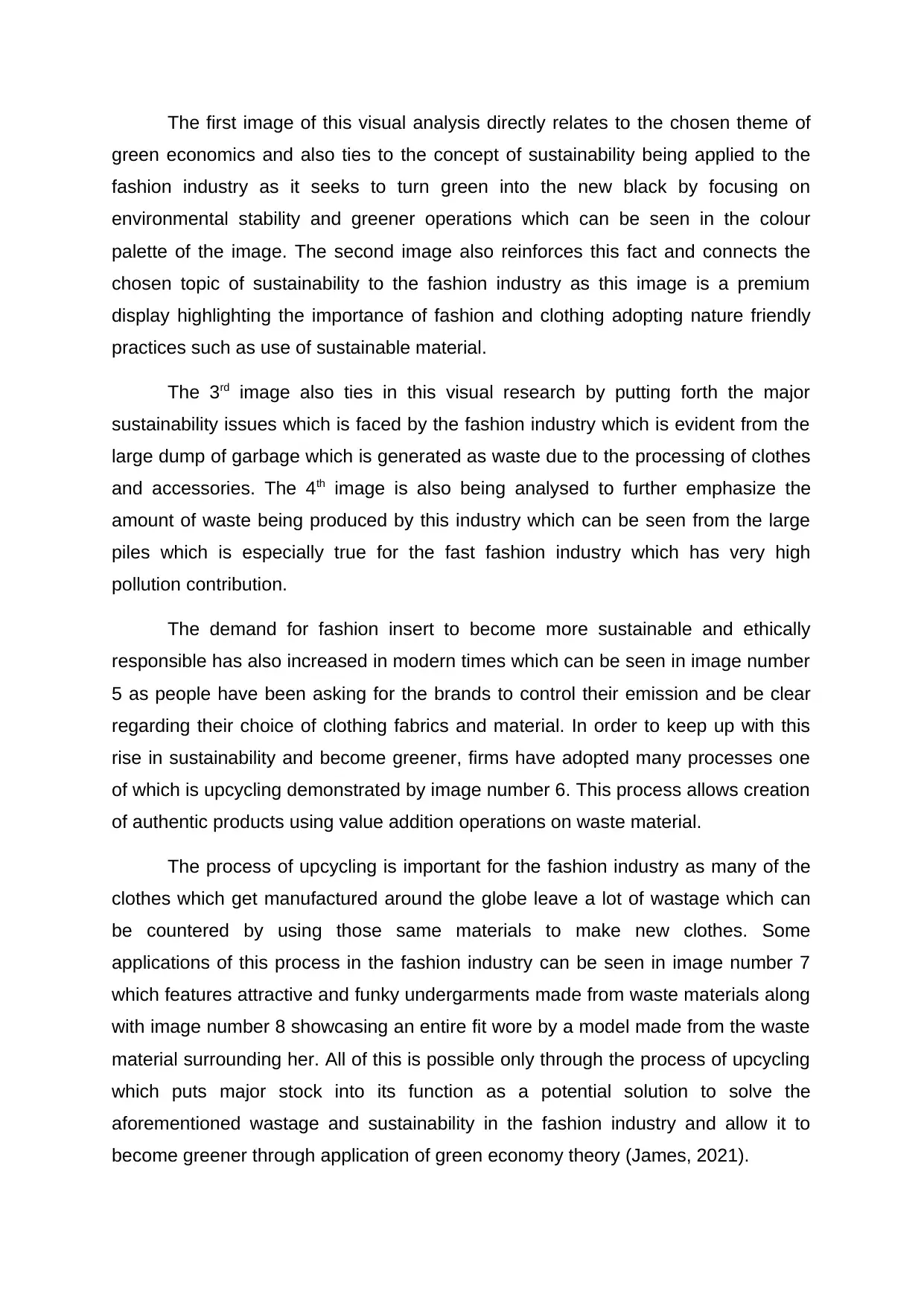
The first image of this visual analysis directly relates to the chosen theme of
green economics and also ties to the concept of sustainability being applied to the
fashion industry as it seeks to turn green into the new black by focusing on
environmental stability and greener operations which can be seen in the colour
palette of the image. The second image also reinforces this fact and connects the
chosen topic of sustainability to the fashion industry as this image is a premium
display highlighting the importance of fashion and clothing adopting nature friendly
practices such as use of sustainable material.
The 3rd image also ties in this visual research by putting forth the major
sustainability issues which is faced by the fashion industry which is evident from the
large dump of garbage which is generated as waste due to the processing of clothes
and accessories. The 4th image is also being analysed to further emphasize the
amount of waste being produced by this industry which can be seen from the large
piles which is especially true for the fast fashion industry which has very high
pollution contribution.
The demand for fashion insert to become more sustainable and ethically
responsible has also increased in modern times which can be seen in image number
5 as people have been asking for the brands to control their emission and be clear
regarding their choice of clothing fabrics and material. In order to keep up with this
rise in sustainability and become greener, firms have adopted many processes one
of which is upcycling demonstrated by image number 6. This process allows creation
of authentic products using value addition operations on waste material.
The process of upcycling is important for the fashion industry as many of the
clothes which get manufactured around the globe leave a lot of wastage which can
be countered by using those same materials to make new clothes. Some
applications of this process in the fashion industry can be seen in image number 7
which features attractive and funky undergarments made from waste materials along
with image number 8 showcasing an entire fit wore by a model made from the waste
material surrounding her. All of this is possible only through the process of upcycling
which puts major stock into its function as a potential solution to solve the
aforementioned wastage and sustainability in the fashion industry and allow it to
become greener through application of green economy theory (James, 2021).
green economics and also ties to the concept of sustainability being applied to the
fashion industry as it seeks to turn green into the new black by focusing on
environmental stability and greener operations which can be seen in the colour
palette of the image. The second image also reinforces this fact and connects the
chosen topic of sustainability to the fashion industry as this image is a premium
display highlighting the importance of fashion and clothing adopting nature friendly
practices such as use of sustainable material.
The 3rd image also ties in this visual research by putting forth the major
sustainability issues which is faced by the fashion industry which is evident from the
large dump of garbage which is generated as waste due to the processing of clothes
and accessories. The 4th image is also being analysed to further emphasize the
amount of waste being produced by this industry which can be seen from the large
piles which is especially true for the fast fashion industry which has very high
pollution contribution.
The demand for fashion insert to become more sustainable and ethically
responsible has also increased in modern times which can be seen in image number
5 as people have been asking for the brands to control their emission and be clear
regarding their choice of clothing fabrics and material. In order to keep up with this
rise in sustainability and become greener, firms have adopted many processes one
of which is upcycling demonstrated by image number 6. This process allows creation
of authentic products using value addition operations on waste material.
The process of upcycling is important for the fashion industry as many of the
clothes which get manufactured around the globe leave a lot of wastage which can
be countered by using those same materials to make new clothes. Some
applications of this process in the fashion industry can be seen in image number 7
which features attractive and funky undergarments made from waste materials along
with image number 8 showcasing an entire fit wore by a model made from the waste
material surrounding her. All of this is possible only through the process of upcycling
which puts major stock into its function as a potential solution to solve the
aforementioned wastage and sustainability in the fashion industry and allow it to
become greener through application of green economy theory (James, 2021).
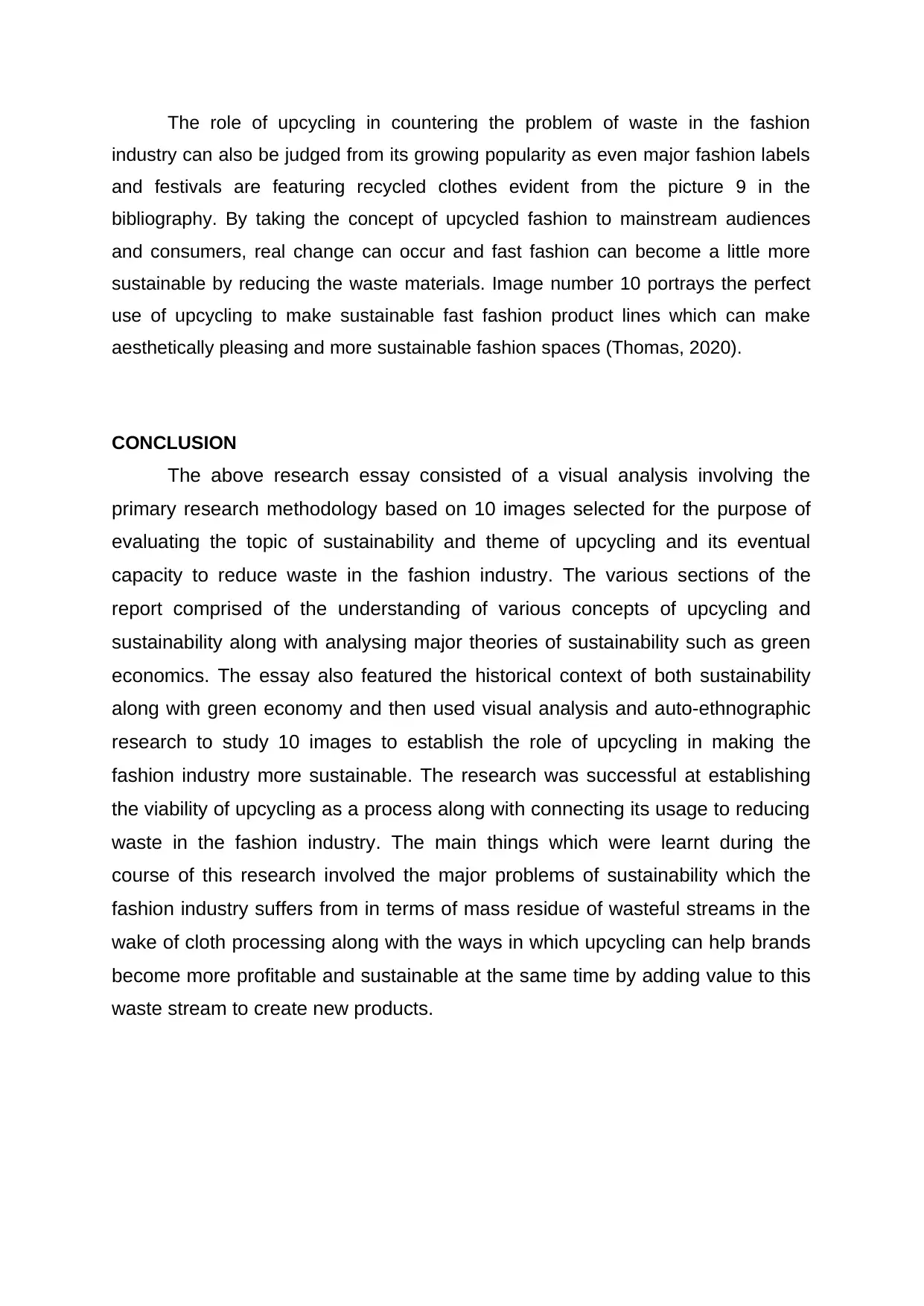
The role of upcycling in countering the problem of waste in the fashion
industry can also be judged from its growing popularity as even major fashion labels
and festivals are featuring recycled clothes evident from the picture 9 in the
bibliography. By taking the concept of upcycled fashion to mainstream audiences
and consumers, real change can occur and fast fashion can become a little more
sustainable by reducing the waste materials. Image number 10 portrays the perfect
use of upcycling to make sustainable fast fashion product lines which can make
aesthetically pleasing and more sustainable fashion spaces (Thomas, 2020).
CONCLUSION
The above research essay consisted of a visual analysis involving the
primary research methodology based on 10 images selected for the purpose of
evaluating the topic of sustainability and theme of upcycling and its eventual
capacity to reduce waste in the fashion industry. The various sections of the
report comprised of the understanding of various concepts of upcycling and
sustainability along with analysing major theories of sustainability such as green
economics. The essay also featured the historical context of both sustainability
along with green economy and then used visual analysis and auto-ethnographic
research to study 10 images to establish the role of upcycling in making the
fashion industry more sustainable. The research was successful at establishing
the viability of upcycling as a process along with connecting its usage to reducing
waste in the fashion industry. The main things which were learnt during the
course of this research involved the major problems of sustainability which the
fashion industry suffers from in terms of mass residue of wasteful streams in the
wake of cloth processing along with the ways in which upcycling can help brands
become more profitable and sustainable at the same time by adding value to this
waste stream to create new products.
industry can also be judged from its growing popularity as even major fashion labels
and festivals are featuring recycled clothes evident from the picture 9 in the
bibliography. By taking the concept of upcycled fashion to mainstream audiences
and consumers, real change can occur and fast fashion can become a little more
sustainable by reducing the waste materials. Image number 10 portrays the perfect
use of upcycling to make sustainable fast fashion product lines which can make
aesthetically pleasing and more sustainable fashion spaces (Thomas, 2020).
CONCLUSION
The above research essay consisted of a visual analysis involving the
primary research methodology based on 10 images selected for the purpose of
evaluating the topic of sustainability and theme of upcycling and its eventual
capacity to reduce waste in the fashion industry. The various sections of the
report comprised of the understanding of various concepts of upcycling and
sustainability along with analysing major theories of sustainability such as green
economics. The essay also featured the historical context of both sustainability
along with green economy and then used visual analysis and auto-ethnographic
research to study 10 images to establish the role of upcycling in making the
fashion industry more sustainable. The research was successful at establishing
the viability of upcycling as a process along with connecting its usage to reducing
waste in the fashion industry. The main things which were learnt during the
course of this research involved the major problems of sustainability which the
fashion industry suffers from in terms of mass residue of wasteful streams in the
wake of cloth processing along with the ways in which upcycling can help brands
become more profitable and sustainable at the same time by adding value to this
waste stream to create new products.
⊘ This is a preview!⊘
Do you want full access?
Subscribe today to unlock all pages.

Trusted by 1+ million students worldwide
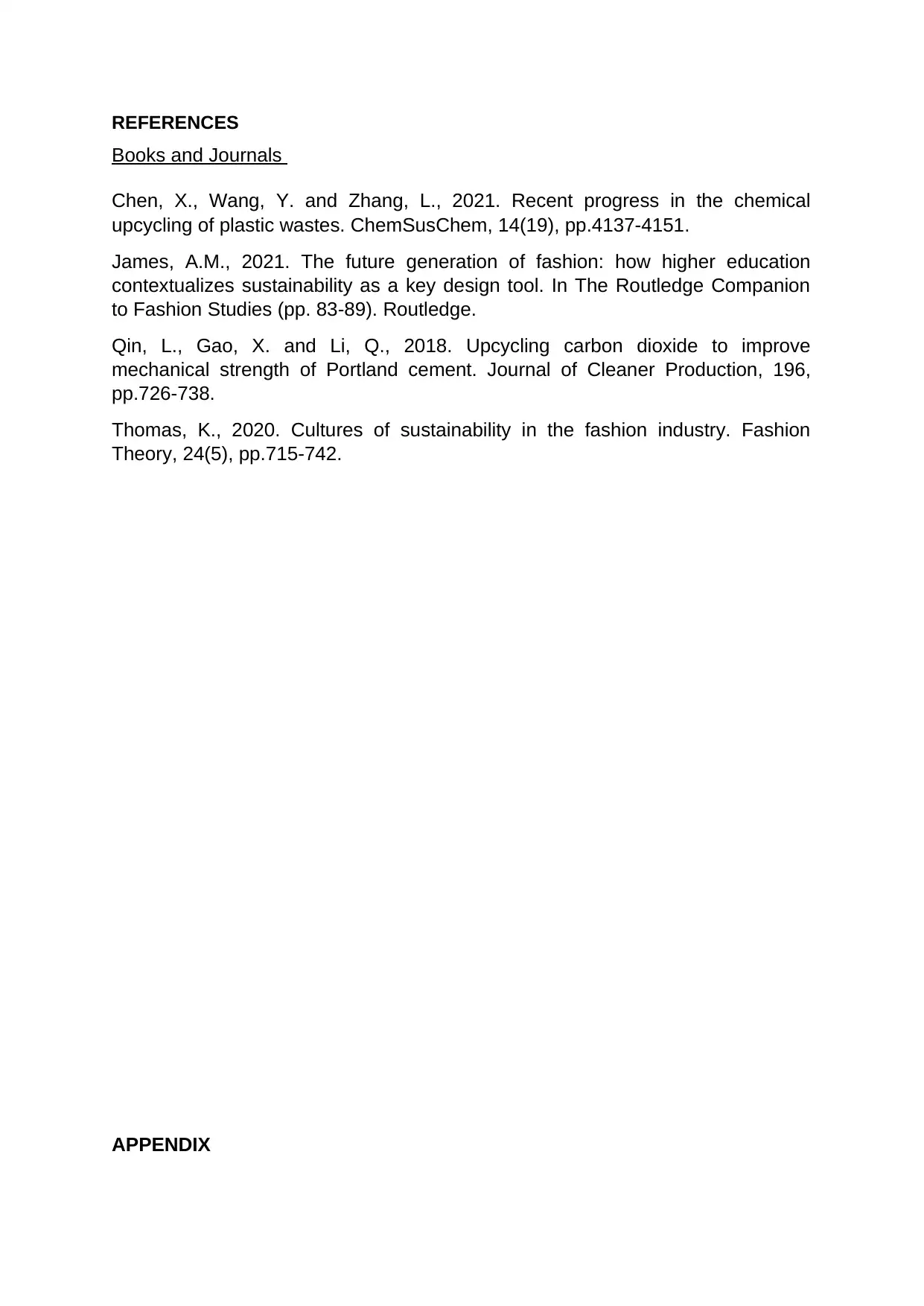
REFERENCES
Books and Journals
Chen, X., Wang, Y. and Zhang, L., 2021. Recent progress in the chemical
upcycling of plastic wastes. ChemSusChem, 14(19), pp.4137-4151.
James, A.M., 2021. The future generation of fashion: how higher education
contextualizes sustainability as a key design tool. In The Routledge Companion
to Fashion Studies (pp. 83-89). Routledge.
Qin, L., Gao, X. and Li, Q., 2018. Upcycling carbon dioxide to improve
mechanical strength of Portland cement. Journal of Cleaner Production, 196,
pp.726-738.
Thomas, K., 2020. Cultures of sustainability in the fashion industry. Fashion
Theory, 24(5), pp.715-742.
APPENDIX
Books and Journals
Chen, X., Wang, Y. and Zhang, L., 2021. Recent progress in the chemical
upcycling of plastic wastes. ChemSusChem, 14(19), pp.4137-4151.
James, A.M., 2021. The future generation of fashion: how higher education
contextualizes sustainability as a key design tool. In The Routledge Companion
to Fashion Studies (pp. 83-89). Routledge.
Qin, L., Gao, X. and Li, Q., 2018. Upcycling carbon dioxide to improve
mechanical strength of Portland cement. Journal of Cleaner Production, 196,
pp.726-738.
Thomas, K., 2020. Cultures of sustainability in the fashion industry. Fashion
Theory, 24(5), pp.715-742.
APPENDIX
Paraphrase This Document
Need a fresh take? Get an instant paraphrase of this document with our AI Paraphraser
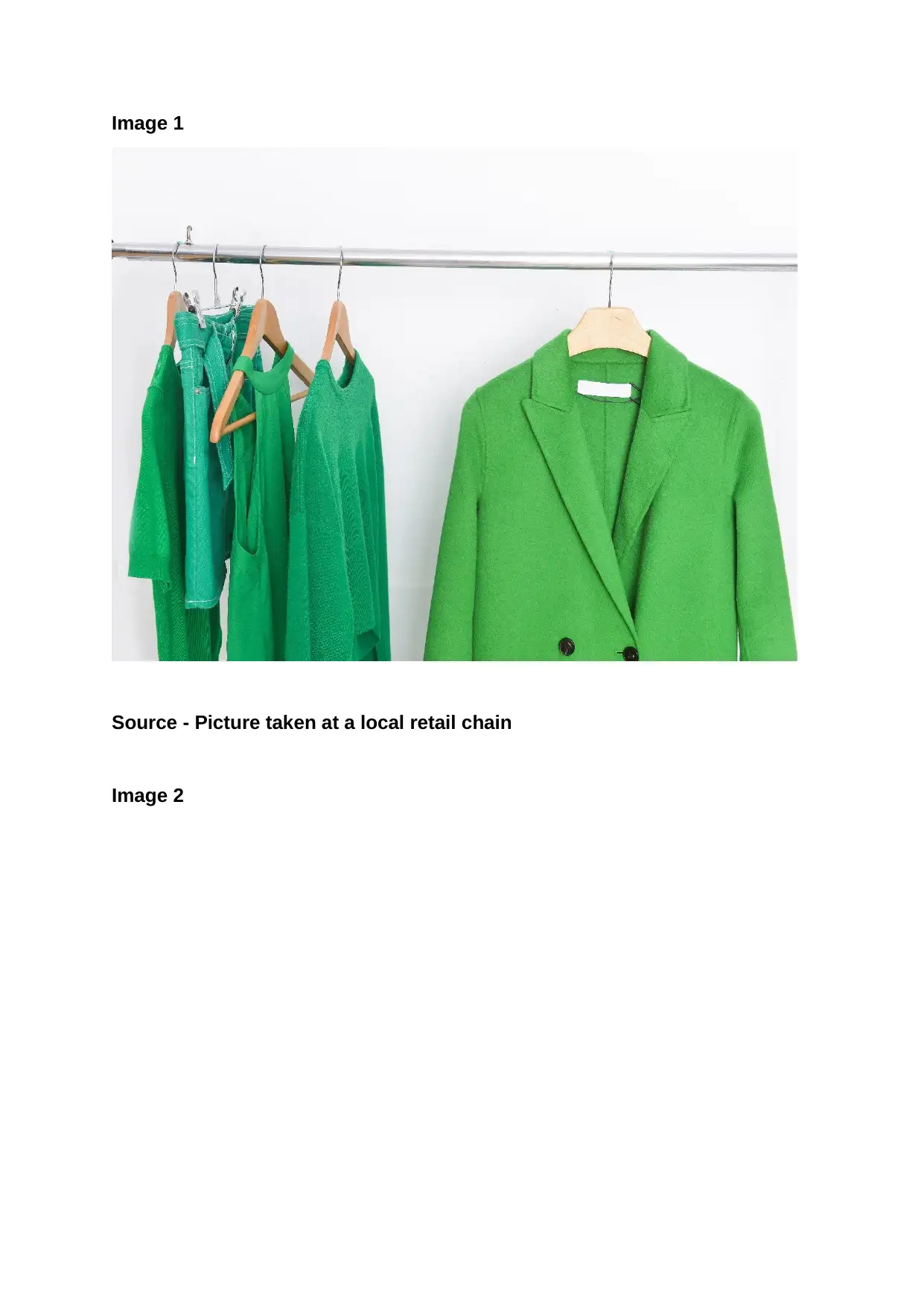
Image 1
Source - Picture taken at a local retail chain
Image 2
Source - Picture taken at a local retail chain
Image 2
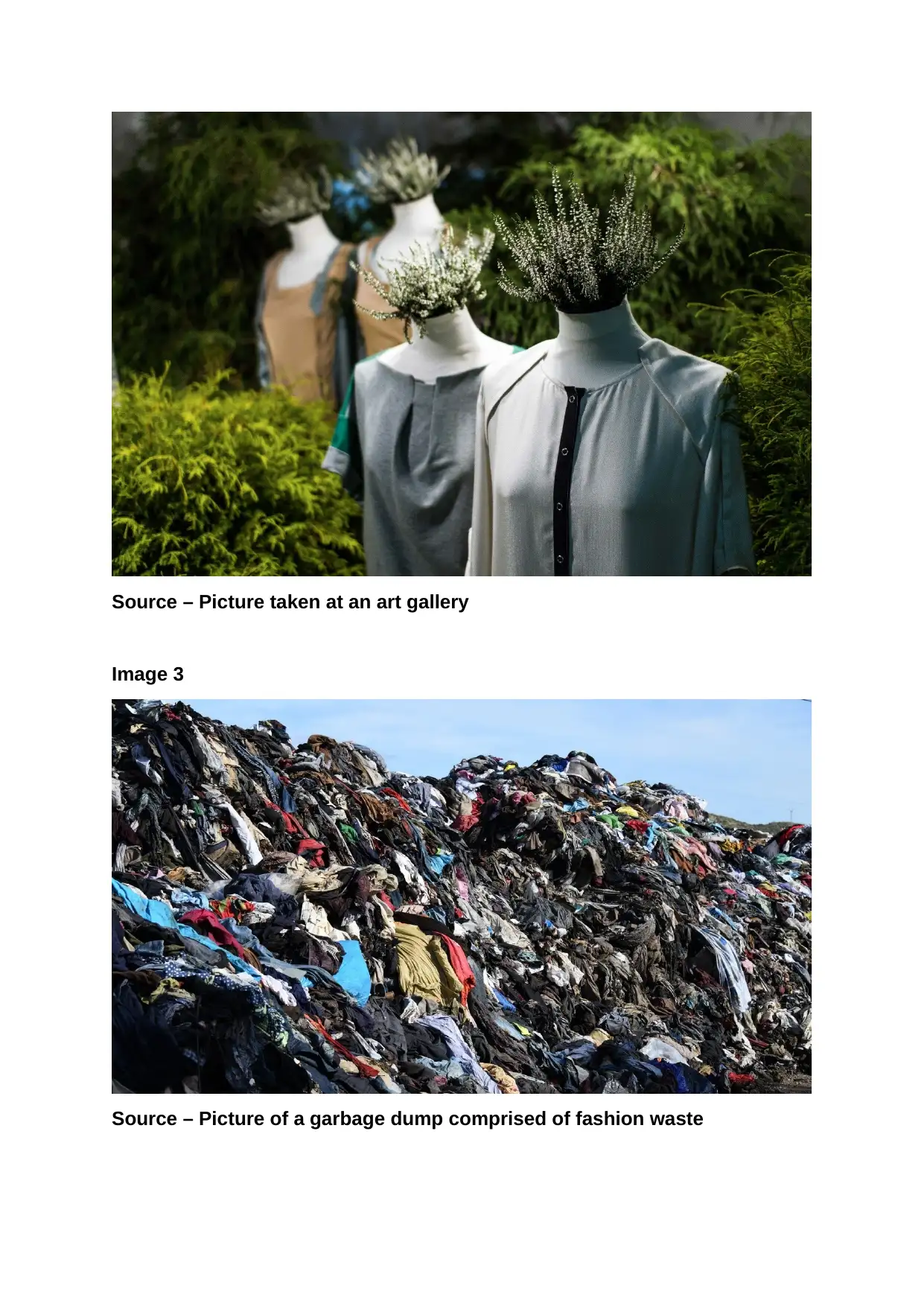
Source – Picture taken at an art gallery
Image 3
Source – Picture of a garbage dump comprised of fashion waste
Image 3
Source – Picture of a garbage dump comprised of fashion waste
⊘ This is a preview!⊘
Do you want full access?
Subscribe today to unlock all pages.

Trusted by 1+ million students worldwide
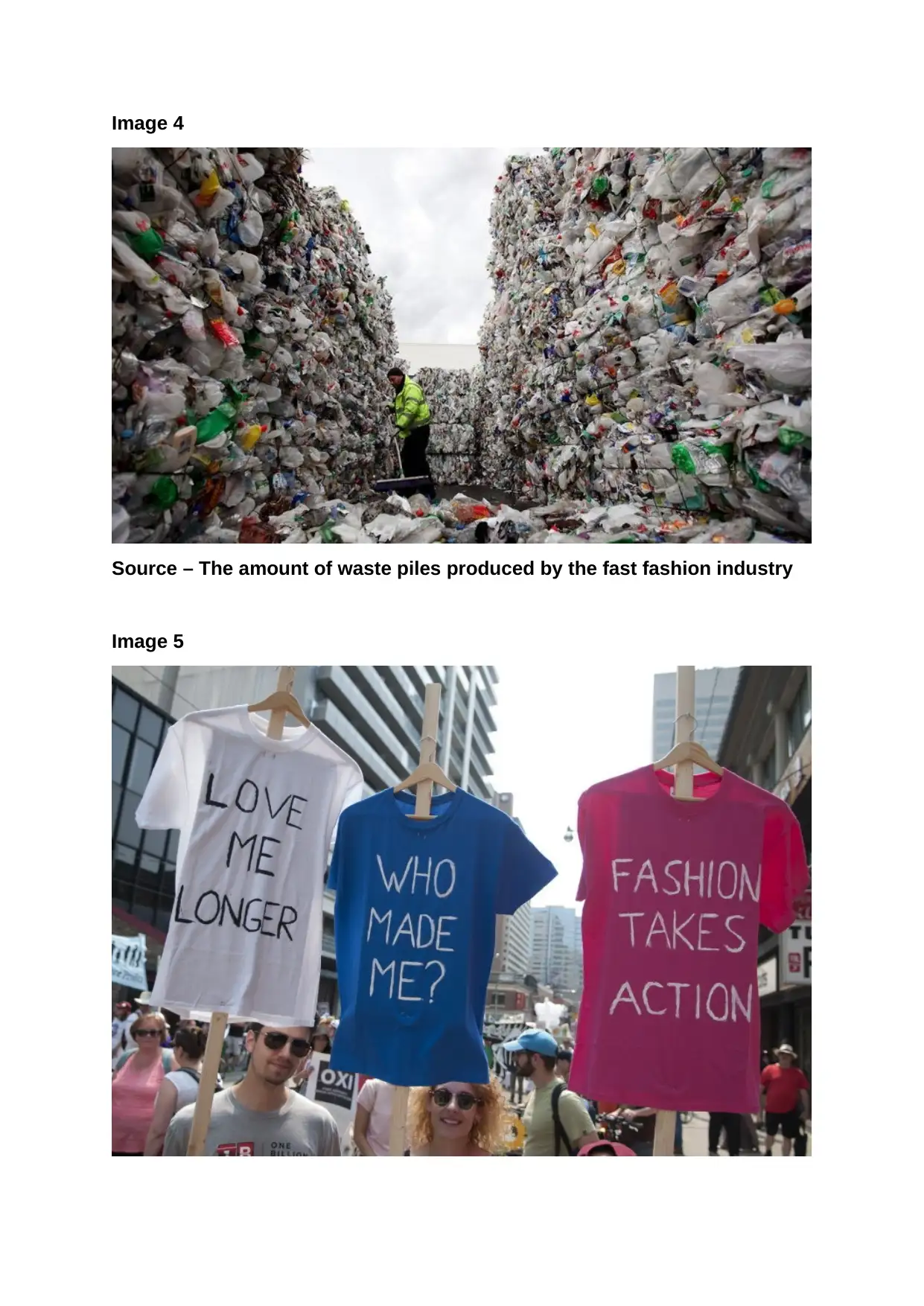
Image 4
Source – The amount of waste piles produced by the fast fashion industry
Image 5
Source – The amount of waste piles produced by the fast fashion industry
Image 5
Paraphrase This Document
Need a fresh take? Get an instant paraphrase of this document with our AI Paraphraser
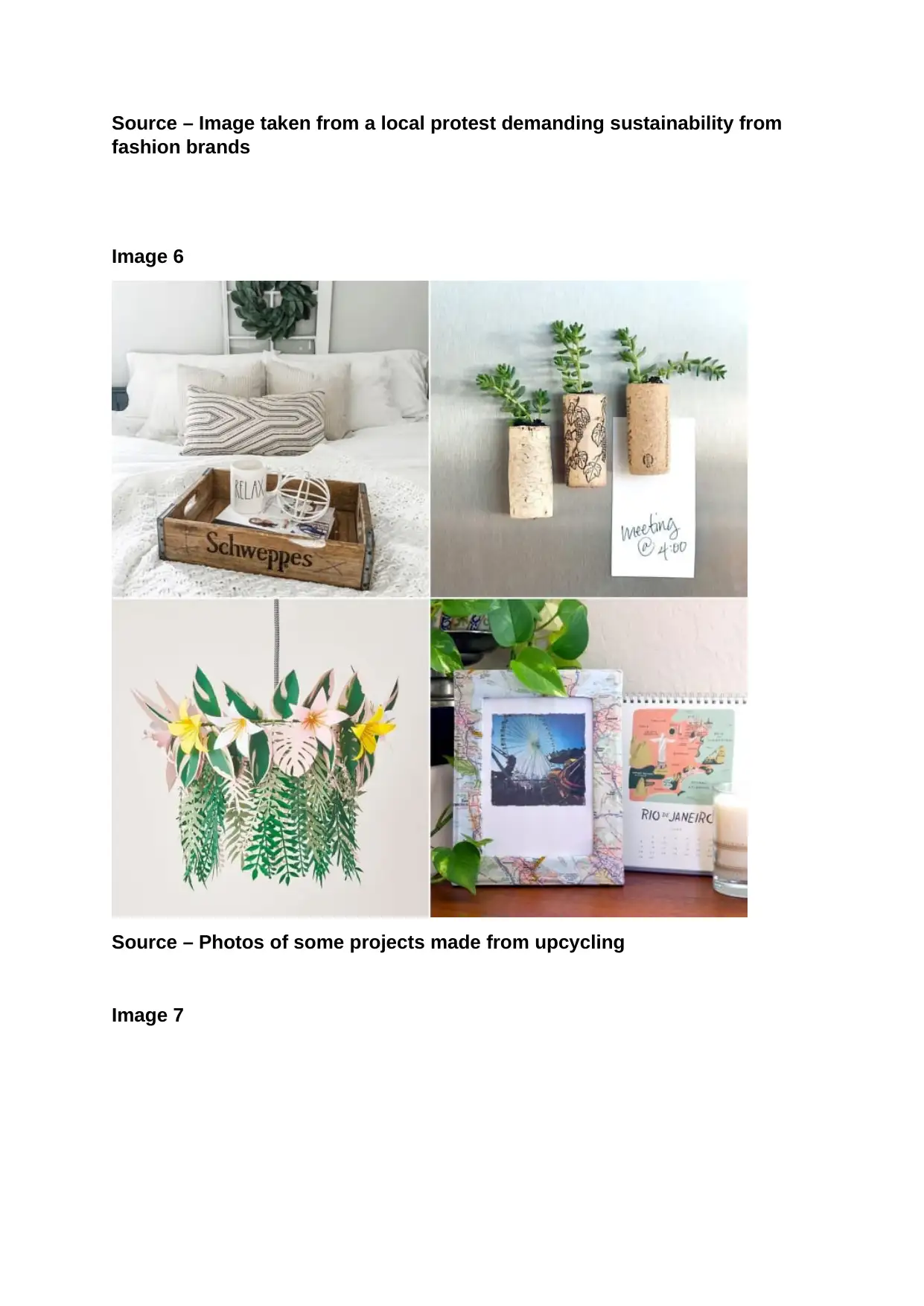
Source – Image taken from a local protest demanding sustainability from
fashion brands
Image 6
Source – Photos of some projects made from upcycling
Image 7
fashion brands
Image 6
Source – Photos of some projects made from upcycling
Image 7
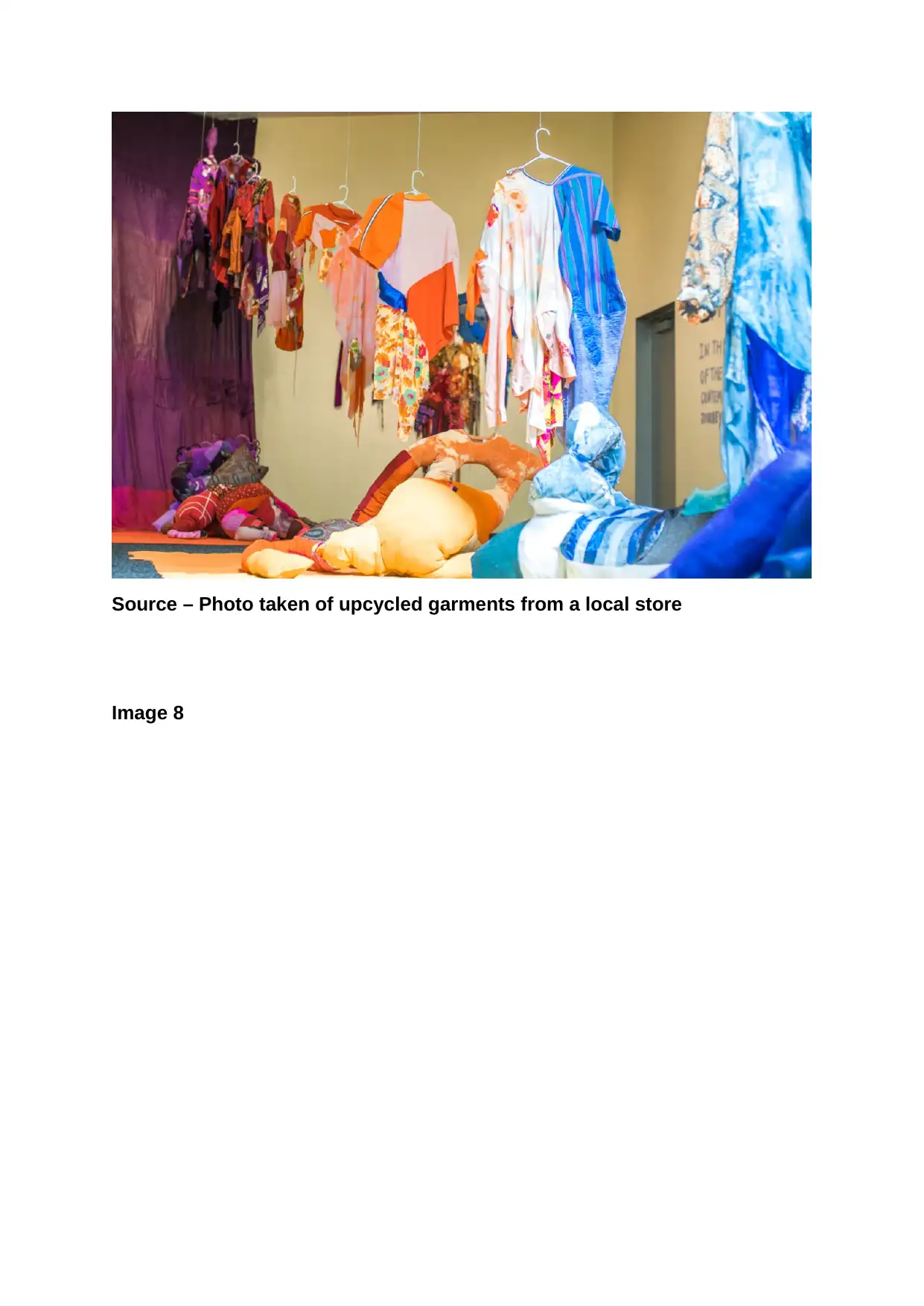
Source – Photo taken of upcycled garments from a local store
Image 8
Image 8
⊘ This is a preview!⊘
Do you want full access?
Subscribe today to unlock all pages.

Trusted by 1+ million students worldwide
1 out of 15
Related Documents
Your All-in-One AI-Powered Toolkit for Academic Success.
+13062052269
info@desklib.com
Available 24*7 on WhatsApp / Email
![[object Object]](/_next/static/media/star-bottom.7253800d.svg)
Unlock your academic potential
Copyright © 2020–2025 A2Z Services. All Rights Reserved. Developed and managed by ZUCOL.





